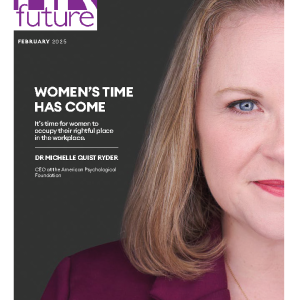More businesses today recognize the importance of inclusivity. It goes beyond regulatory requirements, impacting how employees engage with the company. High standards boost motivation, support productivity, and provide experiences that influence retention. Indeed, at a time when many workers are leaning toward remote work, making a truly inclusive workspace may show your company is worth the daily commute.
Many of the things that make offices more inclusive are rooted in considerate design principles. By taking the time to reassess how your office reflects these and adopting those you’re missing, you can actively create a more positive environment. Let’s explore a few of these principles.
Ergonomic Features
One of the design principles that boosts inclusivity is ergonomics. In essence, ergonomics is about making certain your workspace is designed to be used safely and efficiently by humans. This influences engagement and retention because ergonomic design tends to be more inclusive for people with a range of body types and physical health needs.
When designing your workplace, it’s worth considering the types of ergonomic behavior that minimize injuries. For instance, workers’ seating positions should allow them to sit up straight with their knees at a 90-degree angle. Keeping wrists straight and comfortable while typing also mitigates chronic pain caused by strains.
With such behaviors in mind, some of the ergonomic features you can adopt for a more inclusive workplace include:
- Adjustable chairs: It’s important to invest in chairs that have multiple points of adjustability. This should include the height and angle of head or neck supports, the position of the armrests, and the arrangement of the lumbar cushions. The more tailorable your chairs are, the more inclusive your office will be.
- Screen risers: Looking at a screen from the wrong angle can lead not just to neck strain but affect the visibility of the images workers are looking at. To meet ergonomic principles, workers should be able to raise or lower the screen, rather than simply tilt it. Investing in adjustable risers is a good solution.
Remember, adopting ergonomic principles that mesh with your workers’ human engineering isn’t just a route to inclusivity. It’s key to reducing injuries that can disrupt productivity and cause absenteeism. Your efforts can directly affect your bottom line.
Clear Layout and Navigation
Your space must be built on design principles that support both physical and mental clarity when workers navigate the working environment. This minimizes the potential for accidents and generally makes it easier for people to get around. A less confusing working space also tends to reduce stress, which affects employee experience.
Some of the aspects you can focus on here include the following.
Pathways
It’s wise to consider how the layout of your office space impacts how clear the pathways are for your workers. At the absolute basic level, you need to make certain that all pathways are wide enough to accommodate those using wheelchairs or other mobility aids. There should also be minimal low-level features in these pathways, to minimize trip and injury hazards.
It’s also smart to think about how intuitive your office layout pathways are. Are they arranged in such a way that it’s easy for workers to find their way between departments, toward layout maps, or the nearest exit? Avoiding designing in a labyrinthine manner can simplify the employee experience while also giving a more open atmosphere to the office.
Signage and labeling
Another point of clarity that can affect inclusivity is your office signage and labeling. Even if you feel you have a relatively intuitive layout, it’s important to have signs that tell people where they are and how to get to where they need to go.
Similarly, providing clear instructions for equipment and using safety signs is key to workplace safety. This kind of signage tells employees exactly what they need to do to stay safe at work. You can make things even safer by ensuring people follow these instructions and reassessing your safety signage and plans periodically.
Take things a step further by using people-centric labeling standards. Best practices here include using multilingual labeling and signage, as both staff and visitors may be non-native English speakers. You should also adopt culturally relevant symbols, making it easier to determine at a glance the likely meaning of the label or sign. Incorporating braille and using high-contrast colors between text and background can also make signs and labels inclusive for those with visibility challenges.
Flexible Working Environments
Rigidity in your workspace is not exactly conducive to an inclusive office. Your employees and visitors all have different needs and preferences. The more you can incorporate flexible design principles, the more likely your space can support workers to thrive and influence their willingness to spend time with your business.
Some of the elements that can promote flexibility include:
- Solitary and collaborative spaces: Some workers like to work alone, while others enjoy the hustle and bustle of their colleagues. Many prefer a combination of both at different times and depending on their tasks. Wherever possible, make your office flexible enough to cater to these preferences and needs. Create sections of the office with open-plan desks and put solitary cubicles in others. Rather than arranging desktop devices, you can provide laptops that enable workers to move around these spaces as their preferences dictate.
- Quiet zones: A little quiet time every now and then can boost focus and productivity. Not to mention that some of your workers may have neurodivergent traits, meaning constant exposure to stimuli can be overwhelming. You can be more inclusive by building dedicated quiet zones into your office, with soundproofing, softer lighting, and a ban on phone use.
Each workforce will be composed of people with varying needs. Being flexible to every possible need isn’t always practical. Therefore, it is vital to regularly listen to your employees about what they feel is working and what could make their working experience more pleasant and productive. From here you can adopt flexibility in relevant ways.
Conclusion
By adopting some inclusive design principles in your workplace, you can create more productive and positive experiences for your stakeholders. This includes everything from ensuring ergonomic features are in place to incorporating flexibility throughout your office. Remember that this isn’t a one-and-done activity, though. Committing to regular assessments and improvements ensures continued access for all and strengthens workers’ connections with your business.












